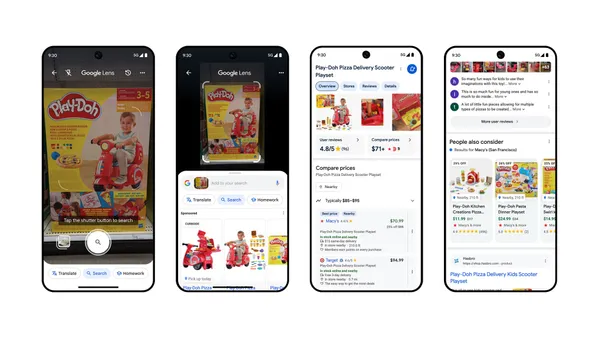Given the dramatic rise of mobile over the last several years — with even more dramatic growth coming, according to a recent Cisco report — marketers of all stripes should be integrating mobile into their marketing strategies. In the past five years alone, mobile has cemented itself as a strong marketing tactic. And with nearly two-thirds of Americans owning smartphones, it's clear that if advertisers want to reach consumers, mobile should be the first place they try.
Cisco's Visual Networking Index white paper, which it released in February, painted a fairly bright picture for the mobile category, providing a global mobile data traffic forecast for 2015 to 2020. Some eye-popping data points about the rise of mobile include:
- Global mobile data traffic grew 74% in 2015, reaching 3.7 exabytes per month,
- Mobile data traffic has grown 4,000-fold over the past 10 years,
- And it has grown almost 400-million-fold over the past 15 years.
Going a step further, Cisco provided some milestone expectations for 2020:
- Global monthly data traffic will be 30.6 exabytes (compared to the 3.7 monthly exabytes at the end of last year),
- Mobile connected devices per capita will reach 1.5,
- A majority (75%) of global mobile data traffic will be video,
- And smartphones will account for 80% of mobile data traffic.
Given those numbers, it is more than clear that mobile marketing is a channel that simply cannot be ignored. It has already become a part of many other marketing channels including email, website marketing and search, among others.
Mobile is becoming such a critical marketing element, and Noah Jessop, head of data for Liquid PCH, told Marketing Dive that except for situations where businesses are selling high-value products, "where the shopper requires a large amount of information and coaxing before making their purchase," mobile should and needs to fit into virtually all marketing strategies right now.
"Mobile is critical — Google has finally noted that more than half of searches are conducted on mobile, and this will only go up as computing becomes even more ubiquitous," Jessop said. "The shift to mobile is only going to increase — and unprepared marketers will be left trying to catch up."
Making mobile part of an overall marketing strategy
One challenge with creating any marketing strategy is making budget and time decisions for the different marketing channels and activities involved. For instance, More time spent on email means less time for social media, and more money spent on paid search might mean less budget space for third-party creative talent.
Jessop pointed out the approach to mobile is no different than any other strategy decision. Though "there is no 'one-size-fits-all' when budgeting time and resources for mobile — the most important thing is to craft the connection with your potential customer in the best way possible," he said.
As many marketers are finding mobile to be the best connection with potential customers, Jessop advised marketers to watch out for two major challenges when creating a mobile marketing strategy.
1. When adding mobile to marketing mix, don’t forget to optimize for mobile. He explained, for example, “Hollywood sometimes will spend 100% of their budget on mobile to promote a new movie opening. But the teams that make previews are still used to the old format — previews that open with a few seconds of black, a few seconds of title screens, as contrasted to the immediate, stackable experience that mobile dictates. In this case, Hollywood has the right idea of getting their advertising where eyes are going, but they’re leaving out a crucial component: making that mobile experience user-friendly.”
2. Be sure to recognize real-time opportunities to leverage the power of mobile. One way to achieve this, he suggested, is through a hyper-targeted, in-store mobile ad, which can serve as the best “real estate” for brands battling for attention in today’s hyper-connected world.
The value of mobile marketing
A key advantage of mobile marketing is the ability to reach people in different contexts, such as at the moment of price comparison in a brick-and-mortar location, or maybe just away from the office.
In the first case — the price comparison — Jessop said the mobile exposure can make it easier to “follow the digital bread crumbs” to figure out if the marketing message worked. He stated, “For example, when we work with a retailer or quick serve restaurant on mobile marketing, we can connect the exposed mobile IDs to a panel of users who have opted in to sharing their location — and ultimately conclude if the campaign drove customers to the store.”
Reaching people away from the office is of value to both B2B and B2C marketers. Making a marketing touch point out of the office context might find someone who is more open to listening to the message.
“Rather than barraging the work inbox during the busiest part of her day,” Jessop said, “mobile paid media can be used to find the same executive during a weekend at home on her iPad.”
One important thing to remember, he said, is to "use the data you already have, about the customers who you know already love your product or service" — it might lead you to insights about potential new customers.












